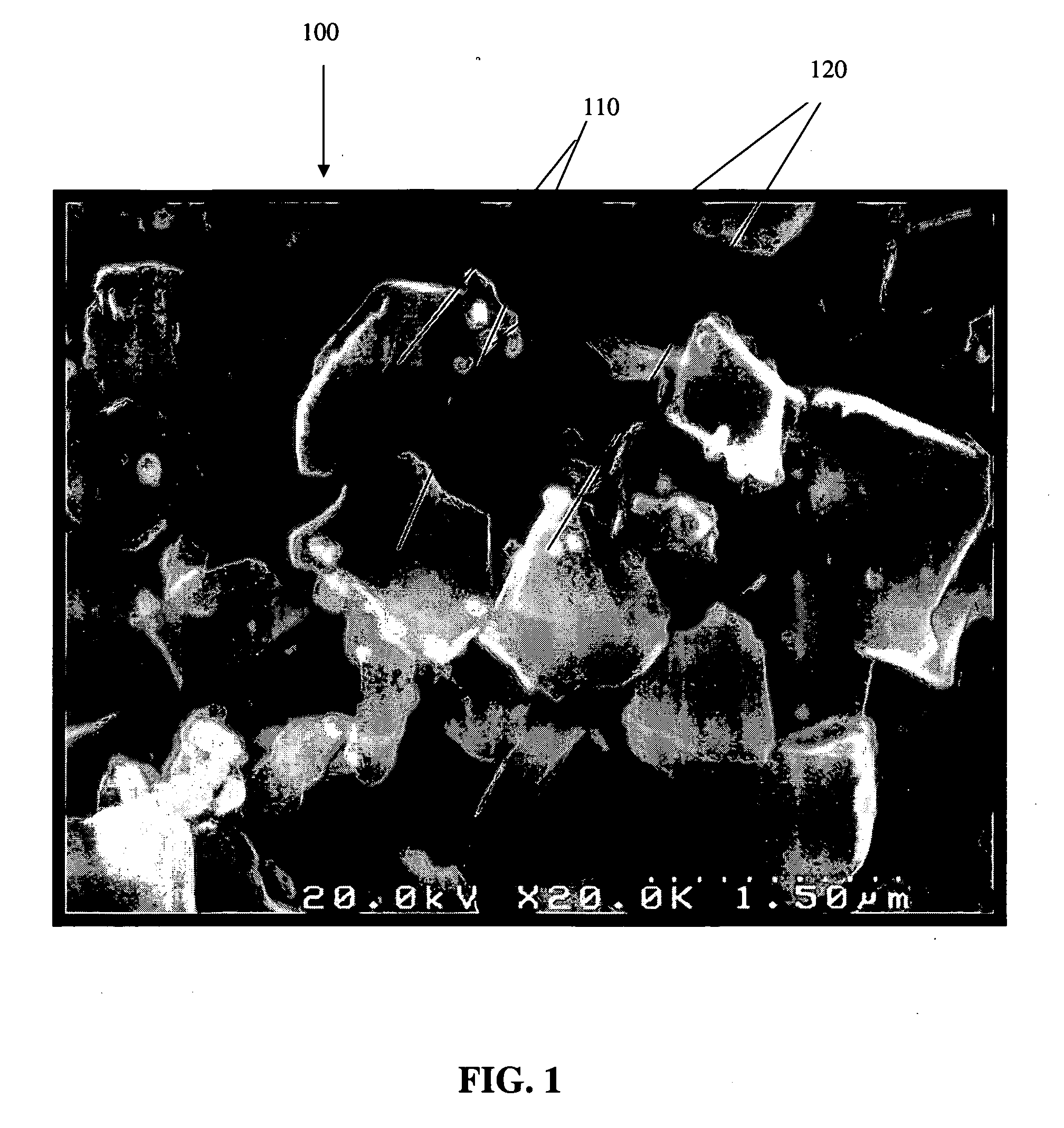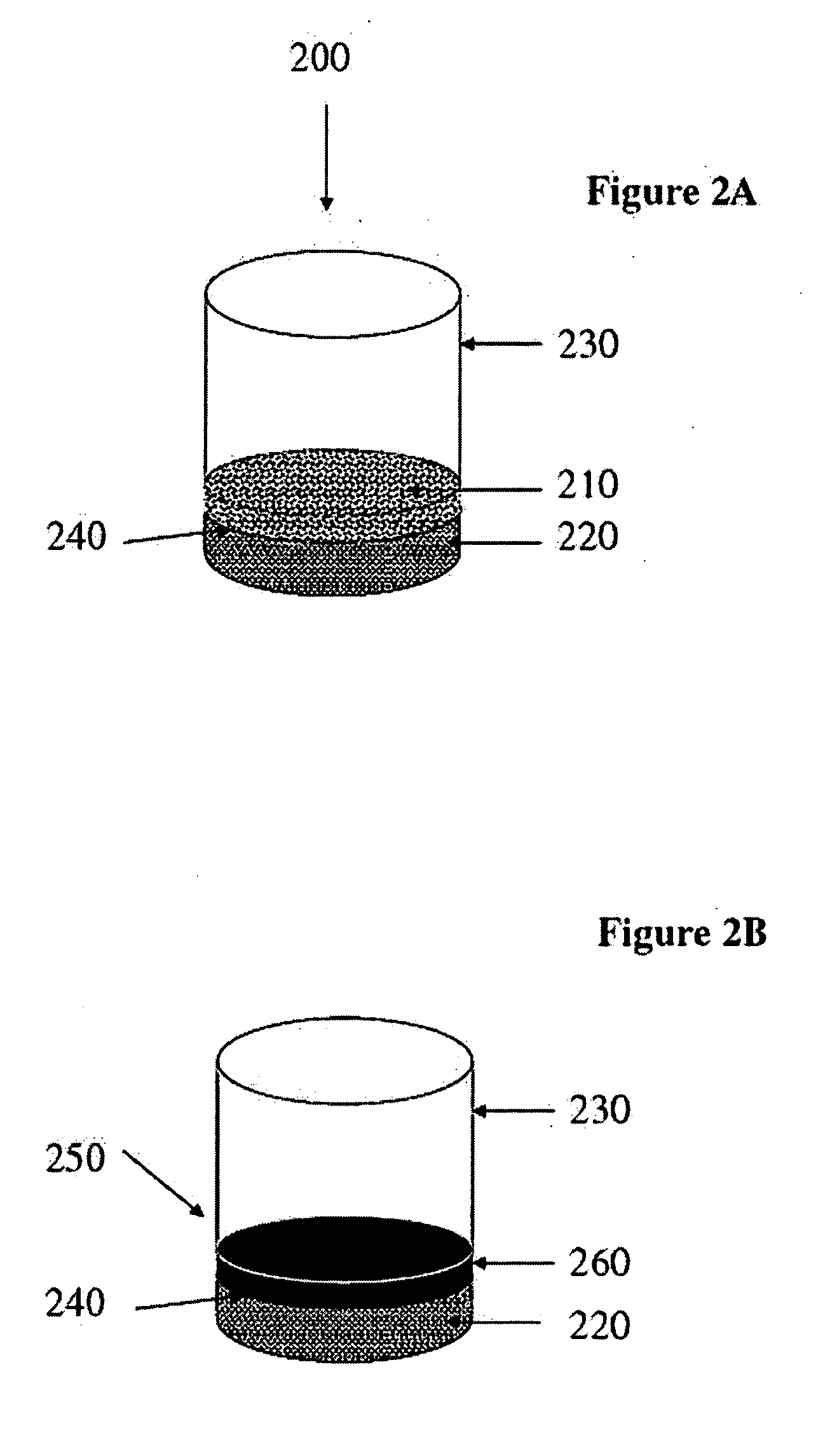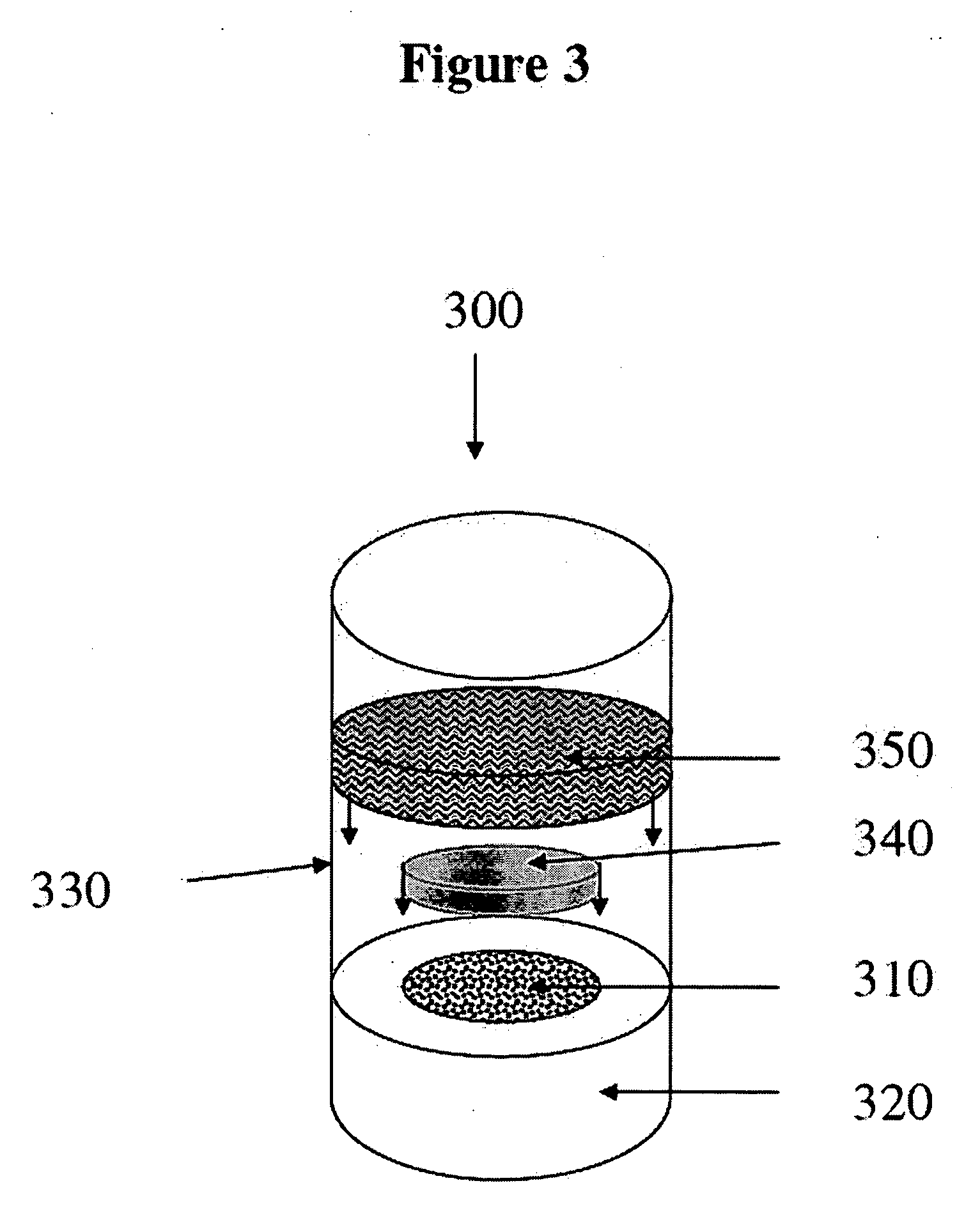Polycrystalline diamond material with extremely fine microstructures
a diamond material and microstructure technology, applied in the field of diamond cutting and forming tools, can solve the problems of high melting point, difficult to achieve high purity, difficult to oxidize, and not provide extremely smooth cut, drawn or otherwise formed workpiece surfaces,
- Summary
- Abstract
- Description
- Claims
- Application Information
AI Technical Summary
Benefits of technology
Problems solved by technology
Method used
Image
Examples
example 1
[0067]Referring again to FIGS. 2A and 2B, this example demonstrates the ability to make PCD composites in which the sintered diamond is integrally bonded to a cemented metal carbide substrate. A diamond-cobalt oxalate dihydrate powder blend with approximately 2.5 cobalt metal by weight, distributed as shown in FIG. 1 with approximately 0.8 microns volumetric mean raw material diamond size 210, was disposed between a tantalum (Ta) shielding enclosure 230 and a cemented tungsten carbide (WC)+13 weight-percent cobalt disk.
[0068]This assembly was subjected to HP / HT processing at about 65 Kbar at temperature of about 1400° C. for 10 minutes to form the sintered submicron PCD tool blank 260. The PCD tool blank 250 was finished to produce a diamond layer 260 1.5 mm thick, and the overall thickness of the blank 250 was 3.2 mm. The average as-sintered diamond grain size, assessed by direct line intercept measurement of the microstructure with a field emission scanning electron microscope, wa...
example 2
[0069]In this example, the properties of several PCD bodies (Samples A-D) prepared with diamond powder of 0.8 micron volumetric mean size and a competitor PCD body, marketed as having a 1 micron diamond grain size, are compared. Sample A is identical to the description outlined in Example 1. Sample C was prepared using the same process as Sample A but without blending the diamond powder with a source catalyst metal compound.
[0070]Sample D refers to a PCD body prepared using the same process as Sample A but using cobalt oxalate dihydrate that was not pre-milled. In this case, the volumetric mean size of the cobalt oxalate dihydrate blended with the diamond was about 2.8 microns. A blast wear test was employed to test the quality of PCD. In the blast wear test, SiC media (average grain size 145 microns) was carried through a nozzle (having a diameter of 6.5 mm) by air pressure (about 60 psi) to impact a 16 mm diameter sample of PCD at a distance of 8 cm. The sample was held at a 90 de...
PUM
| Property | Measurement | Unit |
|---|---|---|
| grain size | aaaaa | aaaaa |
| volumetric mean particle size | aaaaa | aaaaa |
| volumetric mean particle size | aaaaa | aaaaa |
Abstract
Description
Claims
Application Information
 Login to View More
Login to View More - R&D
- Intellectual Property
- Life Sciences
- Materials
- Tech Scout
- Unparalleled Data Quality
- Higher Quality Content
- 60% Fewer Hallucinations
Browse by: Latest US Patents, China's latest patents, Technical Efficacy Thesaurus, Application Domain, Technology Topic, Popular Technical Reports.
© 2025 PatSnap. All rights reserved.Legal|Privacy policy|Modern Slavery Act Transparency Statement|Sitemap|About US| Contact US: help@patsnap.com



